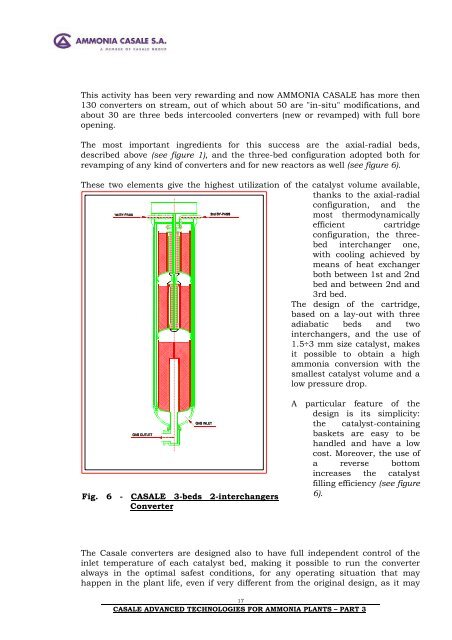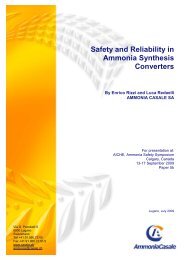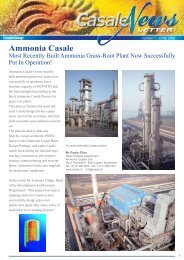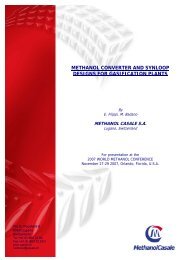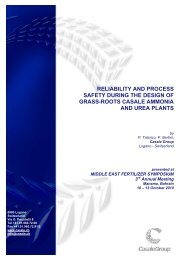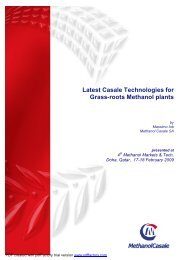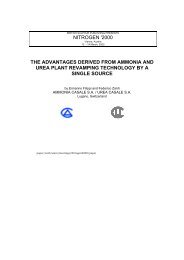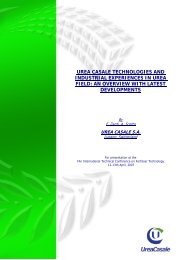ADVANCED AMMONIA CASALE ... - CASALE GROUP
ADVANCED AMMONIA CASALE ... - CASALE GROUP
ADVANCED AMMONIA CASALE ... - CASALE GROUP
You also want an ePaper? Increase the reach of your titles
YUMPU automatically turns print PDFs into web optimized ePapers that Google loves.
This activity has been very rewarding and now <strong>AMMONIA</strong> <strong>CASALE</strong> has more then<br />
130 converters on stream, out of which about 50 are "in-situ" modifications, and<br />
about 30 are three beds intercooled converters (new or revamped) with full bore<br />
opening.<br />
The most important ingredients for this success are the axial-radial beds,<br />
described above (see figure 1), and the three-bed configuration adopted both for<br />
revamping of any kind of converters and for new reactors as well (see figure 6).<br />
These two elements give the highest utilization of the catalyst volume available,<br />
thanks to the axial-radial<br />
configuration, and the<br />
most thermodynamically<br />
efficient cartridge<br />
configuration, the threebed<br />
interchanger one,<br />
with cooling achieved by<br />
means of heat exchanger<br />
both between 1st and 2nd<br />
bed and between 2nd and<br />
3rd bed.<br />
The design of the cartridge,<br />
based on a lay-out with three<br />
adiabatic beds and two<br />
interchangers, and the use of<br />
1.5÷3 mm size catalyst, makes<br />
it possible to obtain a high<br />
ammonia conversion with the<br />
smallest catalyst volume and a<br />
low pressure drop.<br />
Fig. 6 - <strong>CASALE</strong> 3-beds 2-interchangers<br />
Converter<br />
A particular feature of the<br />
design is its simplicity:<br />
the catalyst-containing<br />
baskets are easy to be<br />
handled and have a low<br />
cost. Moreover, the use of<br />
a reverse bottom<br />
increases the catalyst<br />
filling efficiency (see figure<br />
6).<br />
The Casale converters are designed also to have full independent control of the<br />
inlet temperature of each catalyst bed, making it possible to run the converter<br />
always in the optimal safest conditions, for any operating situation that may<br />
happen in the plant life, even if very different from the original design, as it may<br />
17<br />
<strong>CASALE</strong> <strong>ADVANCED</strong> TECHNOLOGIES FOR <strong>AMMONIA</strong> PLANTS – PART 3


